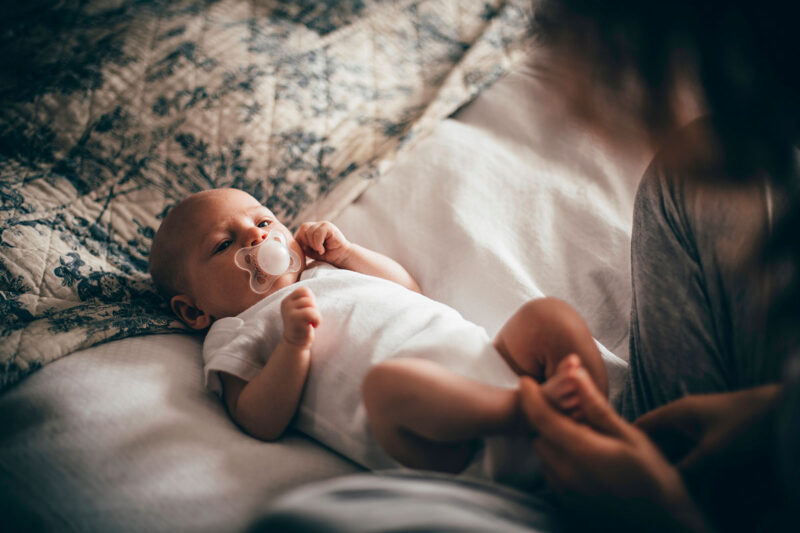People sleep in many different positions. As people get older, they discover their preferred sleep positions. However, there is only one sleep position that is considered the safest for infants and babies under 1-year-old – on his or her back.
Sudden Infant Death Syndrome, more commonly known as SIDS, is an unexplained death that occurs during sleep to a seemingly healthy baby. Approximately 3,500 infants die annually in the United States from sleep-related deaths, including SIDS (American Academy of Pediatrics, 2016). Therefore, sleep positions and sleep surfaces are important factors to consider every time you put your little one down to rest. When sleep surfaces are too soft or you put your baby down on his or her belly or side, there is a risk that his or her airway could be blocked, which can be extremely dangerous, even fatal, for infants.
To help increase sleep safety for your baby, please find below some safe sleep recommendations from the American Academy of Pediatrics.
Back to sleep for every sleep.
Infants should be placed on their backs for every sleep until the child reaches 1-year-old (Moon, Darnall, Feldman-Winter, Goodstein, & Hauck, 2016). Side sleeping and stomach sleeping are not safe.
Use a firm sleep surface.
Place your infant on a firm mattress in a safety-approved crib that is covered by a fitted sheet with no other bedding or soft objects in the crib. It is important that the mattress is firm and maintains its shape (no memory foam mattresses) and that there are no gaps between the mattress and the wall of the crib or bassinet.
Sofas, armchairs, or other soft surfaces can pose a danger to your baby while he or she is sleeping. If your baby falls asleep with you while you are sitting on a soft surface, you should transfer your baby to his or her firm sleep surface, which is, specifically, made for infants.
Infants should sleep in the parents’ bedroom and close to the parents’ bed. Infants should be placed on a separate sleep surface that is designed for infants, for, ideally, the first year of life but, at least, for the first 6 months.
Placing an infant, on an approved sleep surface, in the parents’ bedroom to sleep can reduce the risk of SIDS by as much as 50% (American Academy of Pediatrics, 2016). Having the sleep surface (e.g., baby crib, bassinet, portable crib, play yard) close to the parents’ bed is important because it places the infant within view and reach, and the parents can monitor the infant more closely.
Keep soft objects or loose bedding away from the infant’s sleep area.
Soft objects or loose bedding (e.g., crib bumpers, blankets, pillows, stuffed animals) can obstruct an infant’s nose and mouth, and an obstructed airway can pose a risk to your baby. Worried about keeping your baby warm at night? Try footed onesies for their pajamas or sleep sacks.
References
- American Academy of Pediatrics (2016). American Academy of Pediatrics announces new safe sleep recommendations to protect against SIDS, sleep-related infant deaths. Retrieved from: https://www.aap.org/en-us/about-the-aap/aap-press-room/Pages/American-Academy-of-Pediatrics-Announces-New-Safe-Sleep-Recommendations-to-Protect-Against-SIDS.aspx
- Moon, R. Y., Darnall, R. A., Feldman-Winter, L., Goodstein, M. H., & Hauck, F. R. (2016). SIDS and other sleep-selated infant deaths: Updated 2016 recommendations for a safe infant sleeping environment. Pediatrics, 138(5), 1–14. https://doi.org/10.1542/peds.2016-2938

